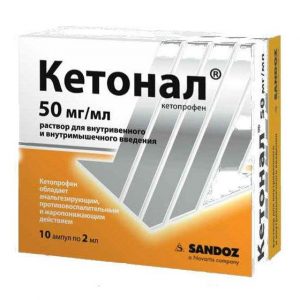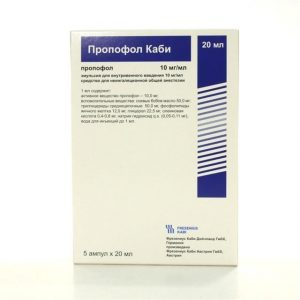Description
Release form
Film-coated tablets
Packing
6 pcs.
Pharmacological action
Next – a combined drug that has analgesic, anti-inflammatory and antipyretic effects.
Paracetamol is a non-narcotic analgesic that has an antipyretic and analgesic effect due to the blockade of cyclooxygenase in the central nervous system and the effect on the centers of pain and thermoregulation.
Ibuprofen is a non-steroidal anti-inflammatory drug that has analgesic, anti-inflammatory and antipyretic effect associated with non-selective suppression of cyclooxygenase activity, regulating prostaglandin synthesis.
The components of the drug affect both the central and peripheral mechanisms of the formation of pain. The directed, complementary effect of the two components has a quick therapeutic effect and a pronounced analgesic effect.
Indications
headache (including migraine)
toothache
algodismenorrhea (painful menstruation)
neuralgia
myalgia
back pain
joint pain, painful and painful pain syndrome inflammatory disease , dislocations,
fractures post-traumatic and postoperative pain syndrome
fever (including flu and catarrhal diseases).
Contraindications
hypersensitivity to the components of the drug
erosive and ulcerative diseases of the gastrointestinal tract (in the acute phase), gastrointestinal bleeding
severe hepatic and / or renal failure
bleeding disorders ( prolonged bleeding time, bleeding tendency, hemorrhagic diathesis)
complete or incomplete combination of bronchial asthma, recurrent polyposis of the nose and paranasal sinuses and intolerance to acetylsalicylic acid or other non-steroidal anti-inflammatory drugs, including history of
condition after coronary artery bypass grafting
confirmed hyperkalemia
glucose-6-phosphate dehydrogenase deficiency
children under 12 years of age.
Caution: Chronic heart failure, viral hepatitis, alcoholic liver damage, hepatic and / or renal failure of moderate and mild severity, benign hyperbilirubinemia (Gilbert, Dubin-Johnson and Rotor syndrome), liver cirrhosis with portal hypertension, nephrotic diabetes, diseases of the peripheral arteries, peptic ulcer of the stomach and duodenum (history) gastritis, enteritis, colitis asthma, bronchospasm elderly pregnancy (I and II trimesters – use is possible only as prescribed by the doctor in cases where the potential benefit exceeds the possible risk).
Use during pregnancy and lactation
The use of the drug in the third trimester of pregnancy is contraindicated.
If you need to use the drug in the I and II trimester of pregnancy, you should be careful – use is possible only as directed by a doctor in those cases when the potential benefit exceeds the possible risk.
During breastfeeding, if necessary, the use of the drug should stop breast-feeding.
Special instructions
The simultaneous use of the drug with other medicines containing paracetamol and / or non-steroidal anti-inflammatory drugs should be avoided.
When using the drug for more than 5-7 days, peripheral blood counts and the functional state of the liver should be monitored.
Paracetamol distorts the results of laboratory studies of glucose and uric acid in blood plasma.
When symptoms of NSAID gastropathy appear, careful monitoring is indicated, including esophagogastroduodenoscopy, a blood test to determine hemoglobin and hematocrit, and feces for occult blood.
If determination of 17-ketosteroids is necessary, the drug should be discontinued 48 hours before the study.
While taking the drug, patients should refrain from all types of activities that require increased attention, rapid mental and motor reactions.
Alcohol-containing drinks are not recommended during treatment.
Composition of
1 tablet contains:
active substances:
ibuprofen 400 mg,
paracetamol 200 mg auxiliary substances:
calcium hydrophosphate (Fujikalin),
cellulose microcrystalline hydrocellulose,
c kryfcrycloxycryloid,
talc,
magnesium stearate,
silicon dioxide colloidal (aerosil
Dosage and administration of
NEXT tablets are taken orally after a meal.
Adults: 1 tablet 3 times a day. The maximum daily dose is 3 tablets.
Children over 12 years old (body weight over 40 kg): 1 tablet 2 times a day.
Duration of treatment is not more than 3 days as an antipyretic and not more than 5 days as an anesthetic.
Continuation of treatment with the drug is possible only after consulting a doctor.
Side effects of
From the nervous system: headache, dizziness, sleep disturbances, anxiety, depression.
From the cardiovascular system: tachycardia, increased blood pressureheart failure.
From the respiratory system: shortness of breath, bronchospasm.
From the gastrointestinal tract: abdominal pain, nausea, vomiting, heartburn, decreased appetite, diarrhea or constipation, flatulence, ulceration of the gum mucosa, aphthous stomatitis, pancreatitis.
Sensory organs: hearing impairment, ringing or tinnitus, visual impairment, blurred vision or diplopia, dryness and irritation of the eyes.
From the urinary system: acute renal failure, nephrotic syndrome, polyuria, cystitis.
Allergic reactions: skin rash, pruritus, allergic rhinitis, angioedema, erythema multiforme exudative (including Stevens-Johnson syndrome), toxic epidermal necrolysis (Lyell’s syndrome).
From the side of hematopoiesis: anemia, thrombocytopenia, thrombocytopenic purpura, agranulocytosis, leukopenia, eosinophilia.
With prolonged use in large doses – hepatotoxic and nephrotoxic (hepatitis, interstitial nephritis and papillary necrosis), hemolytic anemia, aplastic anemia, methemoglobinemia, pancytopenia.
Drug interaction
Inducers of microsomal oxidation in the liver (phenytoin, ethanol, barbiturates, flumecinol, rifampicin, phenylbutazone, tricyclic antidepressants) increase the production of hydroxylated active metabolites, which makes it possible to develop severe intoxication.
Microsomal oxidation inhibitors (including cimetidine) reduce the risk of hepatotoxicity.
Myelotoxic drugs enhance the hematotoxicity of the drug.
The combination of ibuprofen with ethanol, glucocorticosteroids increases the risk of erosive and ulcerative lesions of the gastrointestinal tract.
The simultaneous use of paracetamol with ethanol increases the risk of acute pancreatitis.
Paracetamol and ibuprofen enhance the effect of indirect anticoagulants and reduce the effectiveness of uricosuric drugs.
Prolonged use of barbiturates reduces the effectiveness of paracetamol.
Diflunisal increases the plasma concentration of paracetamol by 50%, which increases the risk of hepatotoxicity.
Ibuprofen reduces hypotensive activity of vasodilators, natriuretic and diuretic – furosemide and hydrochlorothiazide.
Antacids and colestyramine decrease ibuprofen absorption.
Ibuprofen enhances the effect of oral hypoglycemic agents and insulin.
Ibuprofen increases the concentration in the blood of digoxin, lithium and methotrexate.
With simultaneous administration with acetylsalicylic acid, ibuprofen reduces its anti-inflammatory and antiplatelet effect.
Cefamandol, cefaperazone, cefotetan, valproic acid, plicamycin increase the incidence of hypoprothrombinemia.
Overdose
Symptoms: abdominal pain, nausea, vomiting, agitation or retardation, drowsiness, confusion, tachycardia, arrhythmia, acute renal failure, metabolic acidosis, increased urinary incontinence, diarrhea, tremor or muscle twitching increase of activity of “hepatic” transaminases, increase of prothrombin time. If overdose is suspected, seek medical attention immediately.
Treatment: gastric lavage, followed by the appointment of activated carbon alkaline drink, forced diuresis, symptomatic therapy.
Storage conditions
At a temperature not exceeding 25 ° C.
Keep out of the reach and sight of children.
Shelf life
2 years.
uyushtee substance
Ibuprofen, Paracetamol
Conditions of release from drugstores
Without prescription
Dosage form
tablets
Prescription
Prescription
Prescription
For adults, For pregnant women I and three over 12 years old
Pharmstandard-Leksredstva, Russia




